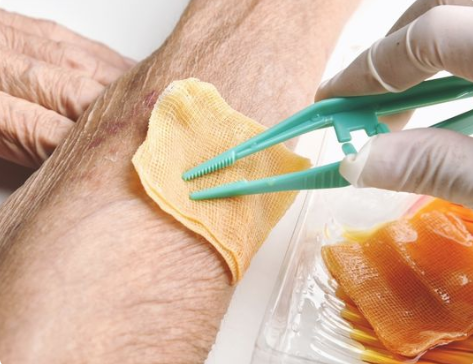The Essential Guide to Diabetic Wound Care: Protecting Your Health

Diabetes, a chronic condition affecting millions worldwide, requires careful management to prevent complications, including diabetic wounds. These wounds can be slow to heal and prone to infection, making proper care essential. In this comprehensive guide, we’ll explore the importance of diabetic wound care and provide practical tips for maintaining optimal health.
Understanding Diabetic Wounds
Diabetic wounds, often found on the feet, can result from nerve damage or poor circulation associated with diabetes. Neuropathy, a common complication, diminishes sensation, leading to unnoticed injuries. Additionally, reduced blood flow impairs the body’s ability to heal, increasing the risk of infection and other complications.
The Importance of Timely Intervention
Prompt intervention is crucial when managing diabetic wounds. Even minor injuries can escalate rapidly, leading to serious infections or, in severe cases, amputation. Regular monitoring and early detection can prevent complications and promote faster healing.
Essential Steps for Diabetic Wound Care
- Daily Inspection: Perform a visual inspection of your feet and other vulnerable areas for any signs of injury, such as cuts, blisters, or redness. Use a mirror or enlist the help of a caregiver for areas that are difficult to see.
- Wash with Care: Cleanse wounds gently with mild soap and lukewarm water. Avoid hot water, as it can cause further damage. Pat the area dry with a soft towel, ensuring thorough drying between the toes.
- Protective Dressings: Apply an appropriate dressing to the wound to protect it from further injury and reduce the risk of infection. Choose dressings specifically designed for diabetic wounds, which provide optimal moisture balance and promote healing.
- Monitor Blood Glucose Levels: Keep your blood glucose levels within the target range recommended by your healthcare provider. Elevated blood sugar levels can impair wound healing and increase the risk of complications.
- Foot Care: Maintain proper foot hygiene by keeping nails trimmed, moisturizing dry skin, and wearing comfortable, well-fitting shoes. Avoid going barefoot to prevent injuries.
- Regular Check-ups: Schedule regular check-ups with your healthcare provider, who can assess the progress of your wound and provide guidance on additional treatment options if needed.
Preventing Complications
Prevention is key when it comes to diabetic wound care. By taking proactive measures, you can reduce the risk of complications and promote better overall health. Here are some additional tips:
- Manage Your Diabetes: Follow a healthy diet, engage in regular physical activity, and take prescribed medications as directed to keep your diabetes under control.
- Quit Smoking: Smoking impairs circulation and delays wound healing. Quitting smoking can significantly improve your body’s ability to heal.
- Stay Active: Regular exercise improves blood flow and promotes overall well-being. Aim for at least 30 minutes of moderate exercise most days of the week.
- Seek Prompt Treatment: If you notice any signs of infection, such as redness, swelling, or pus, seek medical attention immediately. Early treatment can prevent the infection from spreading and causing further complications.
Conclusion
Diabetic wound care is a vital aspect of diabetes management that requires diligence and attention to detail. By following the steps outlined in this guide and adopting a proactive approach to your health, you can minimize the risk of complications and enjoy a better quality of life. Remember, your healthcare team is here to support you every step of the way. Take charge of your health today and prioritize proper diabetic wound care for a brighter tomorrow.





